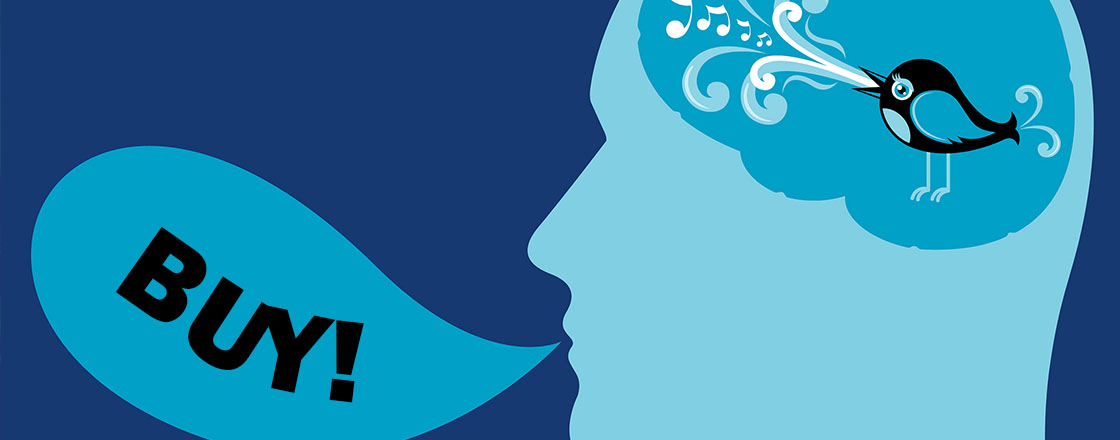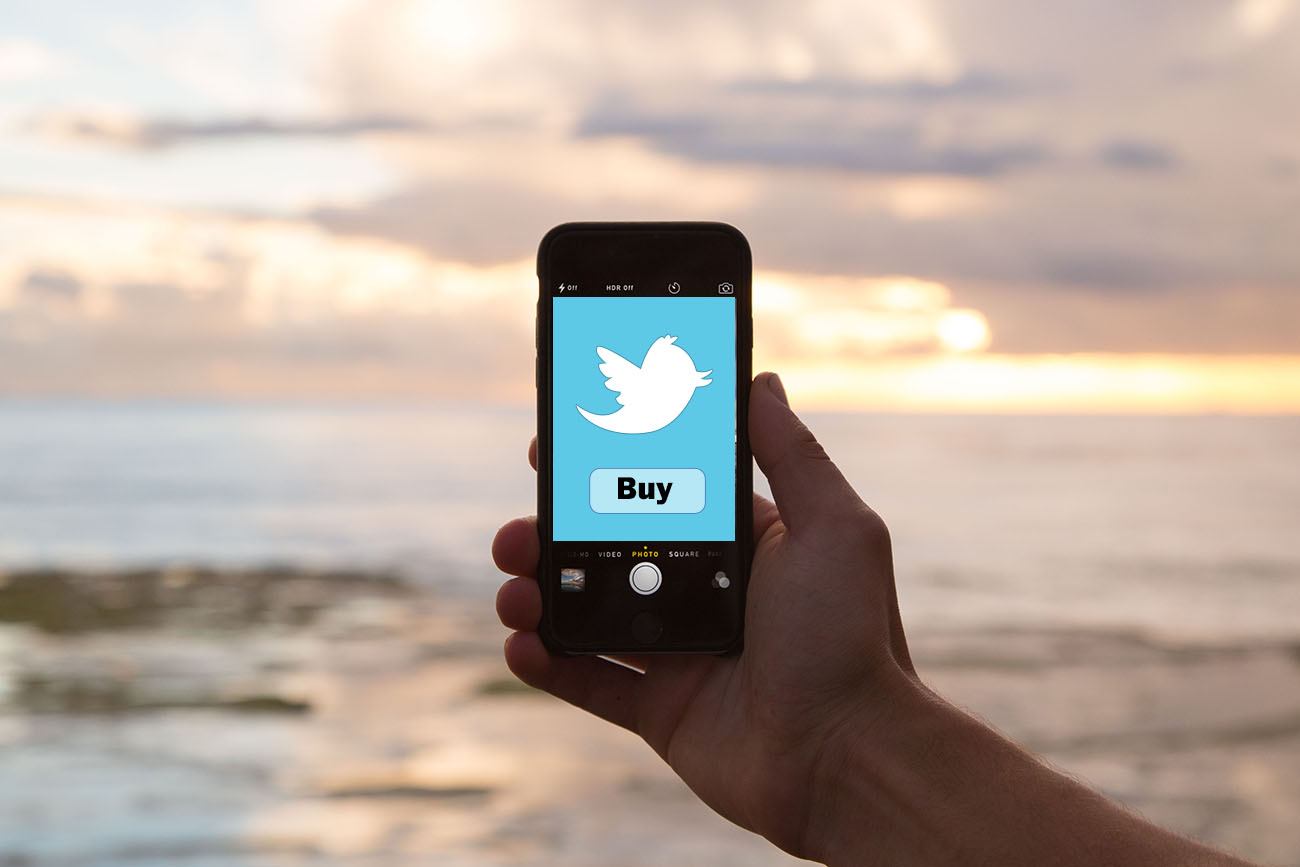When the mobile revolution hit, everyone had to get a mobile-responsive website. That’s still critical, by the way. If you don’t have a responsive site, you’re losing mobile customers. But now mobile ecommerce is changing again. Buy buttons are coming to the major social media platforms—and to Google.
What does this mean for brands and digital marketers? There isn’t one single answer. Brands that use Pinterest will need a different strategy than brands that primarily use Twitter, for example. In this post, we’ll take a quick overview of each platform’s buy button functionality. And we’ll tell you what it means for brands that thrive on that platform.

Pinterest: Visual Shopping
Pinterest is unique among social platforms. Its underlying philosophy is brilliant: to capitalize on our voracious appetite for visual beauty—and to enable our love of stashing things for later use. But as users have long complained, Pinterest didn’t offer an easy tie-in to purchase the items you had pinned.
That has changed.
As Pinterest announced on their blog, buyable pins are coming to Pinterest. Initially, only big brands—Macy’s, Neiman Marcus, and Nordstrom—will have access to buyable pin integration. However, Pinterest plans to roll out the function to many more brands, particularly those using Shopify, Demandware, Bigcommerce, or Magento as their ecommerce platform.
Initially, the Pinterest buy button will be available only on iOs mobile devices. However, it is coming to Android and desktop soon.
For small-to-midsize ecommerce retailers whose primary social market is on Pinterest, this means two things. One, waiting (unfortunately) until the buyable pin integration is available more widely; and two, preparing a good marketing strategy now. Once buyable pins are dropped in your lap, you should be ready to go.
Pinterest Buy Button Strategy
Think about what the Pinterest buy button will do: it will enable instant purchasing of a product—when the user is still feeling love at first sight. In a sense, the Pinterest buy button will accelerate the Pinterest shopping experience, cutting out the delay that can change intent-to-buy into a lost sale.
That means putting your best foot forward on buyable pins—your best foot in every area: most attractive products, best photography, products priced best for your market, and highest margins for you. These are the products you should prepare first for buyable pins.

Twitter: Products Can Now Go Viral
The Twitter buy button will appear directly in a tweet—that’s right, a regular tweet that can be favorited and retweeted. That means unprecedented viral potential for actual product listings. Of course, this functionality only enables virality at the platform level. Most likely, only truly innovative and astounding products will see significant viral lift from the Twitter buy button.
Still, the Twitter buy button is attractive for many reasons. For one thing, Twitter isn’t starting with a few major brands. The buy button is now available to all ecommerce store owners in the US who use Bigcommerce, Demandware, or Shopify as their ecommerce platform. By our count, that’s over 173,000 online stores. In this blog post, Twitter advises ecommerce store owners to contact their ecommerce platform representatives to discuss implementing the buy button functionality.
Twitter Buy Button Strategy
If you’ve used Twitter’s advertising function, you know that the targeting options are highly granular. As well as choosing from hundreds of interests, you can target users who follow certain Twitter accounts, users who watch certain TV shows, and much, much more.
Couple all of this with the coming of Twitter buy buttons, and you have a whole new level of ecommerce targeting precision. That means when you go to promote a buy button tweet through a Twitter ad, you should come to the table with complete, detailed, and accurate information for the market demographic that wants your product. If you match product to demographic well, you should see a high conversion rate.
Instagram Buy Buttons For Visual Shopping
Instagram previously displayed concern over advertising on its platform: would ads disrupt the seamless visual flow of the Instagram experience? Instagram decided the answer was no—as long as the advertising format was considered within the context of the Instagram experience as a whole. Now Instagram is rolling out its own version of the social buy button. According to the platform’s official blog, Instagram’s buy button functionality will provide “an advertising experience that feels native to the platform.”
If you’re concerned about targeting options for the Instagram buy button, you shouldn’t be. According to that same blog post from Instagram, the platform will work with Facebook, enabling advertisers “to reach people on Instagram based on demographics and interests… We want to leverage the best of Facebook’s infrastructure for buying, managing and measuring the success of ads on Instagram.” This sounds like a great partnership, and advertisers who are familiar with Facebook’s high-powered targeting options should find it easy to add Instagram advertising to their repertoire.

Google Buy Buttons: BIG Changes Are Coming To Online Shopping
As Google announced on the Adwords blog, the search giant will start adding buy buttons to “I-want-to-buy” paid search results on mobile. For ecommerce retailers, that means mobile consumers can purchase from your store without ever visiting it. Google will transmit all the purchase data to participating retailers.
For consumers, this sounds like a great way to streamline the mobile purchasing experience. But what will it mean for ecommerce retailers? That’s a bit unclear. In the same blog post, Google says, “While Google hosts the product page and provides purchase protection for customers, retailers own the customer communication and can offer customers the option to receive marketing and promotional messages.”
How will this work? That remains unclear. Allowing customers to opt in to your newsletter is one of the greatest assets to your checkout process as an ecommerce retailer. Will Google collect this data, giving consumers that option? Will Google funnel this data to you in a useable format? It’s too soon to say. As usual, Google’s blog post on the subject is incredibly vague.
Facebook Buy Buttons: Not Quite Yet!
If you were ramping up for the launch of the Facebook buy button, you may have to wait a little longer. As the New York Times reports, Sheryl Sandberg, Facebook’s COO, said, “We are working on this, but it’s not the most important thing we’re working on.”
How will the Facebook buy button affect ecommerce when it does arrive? Clearly, it will work hand-in-hand with Facebook’s sophisticated ad targeting capabilities. That should give merchants the ability to promote a product post directly to the audience that’s most likely to buy the product. For niches whose primary social platform is Facebook, this will be a godsend.
However, not all products may see success with this form of promotion. For example, products with many options, like clothing and tech, might appear too streamlined in an in-line product listing in Newsfeed. Without all the options readily available, consumers might think, “that looks nice, but is it exactly right for me?” Doubtless, Facebook will address this problem; but for now, it remains a valid question.
The Bottom Line
What’s your ecommerce market? At 216digital, we’ve specialized in ecommerce consulting for over 15 years. We know the digital marketing landscape backwards and forwards, and we make informed recommendations to our clients every day. If you have questions about social media buy buttons in your market niche, get in touch. We’re happy to advise you.
